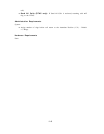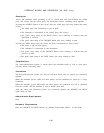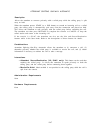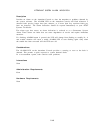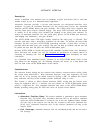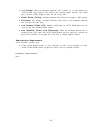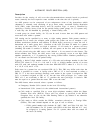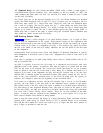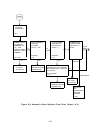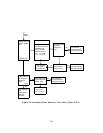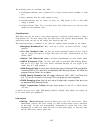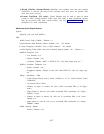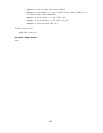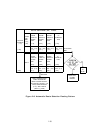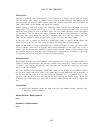V1 Systems Only: For calls outside the HNPA (FNPA calls), a check is made against a
non-administrable Special Numbers List. The numbers in the list include all “800” and
“900” numbers and Telex codes 510, 610, 710, and 810. If a match is found, the call is routed
via the local CO facility.
For FNPA calls not on the Special Numbers List (Vi), the dialed numbers are checked
against the FNPA Exception List (Vl and V2). Up to 32 entries may be assigned to the list.
Each entry must consist of a 3-digit NPA code, 3-digit CO code, and two additional digits
(for a total of 8 digits). The last two digits may be “.”, which match any digit. Each entry
has an associated ARS Routing Pattern. If a match is found, the call is routed using this
pattern. If no match is found, the call is then checked against the NPA Routing Table. A
dialed NPA that is listed in the table is routed using the associated Pattern. Numbers that
don’t match are routed via the local CO facility.
ARS Routing Pattern Table
Figure 2-9 provides a block diagram of an ARS Routing Pattern. Up to eight of these
patterns may be administered in the system.
Each pattern consists of two subpatterns that
may be chosen based on the time of day. Each subpattern (A and B) can contain up to three
allowed routes. If all routes in a subpattern are busy, a CO overflow flag (when set) allows
the call to be routed via the local CO facility; otherwise, the call will queue on the first route
in the subpattern.
Administrable Start and Stop times (Hour and Minute) for Routing Subpattern A specify
when Subpattern A should be used to route calls.
Subpattern B is used to route calls at all
other times.
Each route is specified by its trunk group facility access code (or Virtual Facility code in V2)
and an associated FRL.
An FRL is typically lower for the first route in a subpattern and increases with each
additional route in the pattern.
A terminal’s FRL must be equal to or greater than the route
FRL for the route to be selected. The system first checks the Route #1 for an available
trunk on which to route the call. If the route is busy, Route #2 is checked, then Route #3, if
required. If all routes in the subpattern are busy and the CO overflow flag is set, the voice
terminal FRL is checked against an associated Overflow FRL before routing the call. For V1
only: If the voice terminal is allowed access to the local CO trunk pool, the system, on
overflow, will attempt to place the call regardless of the associated FRLs.
If all routes in a subpattern are busy and the CO Overflow flag is not set, or all CO trunks
are busy, the call returns to the first route in the subpattern and is queued (if the station
FRL permits access to the first route). The caller is placed in an off-hook queue indicated by
five short bursts of tone (Preferred Routing Tone). The order of service in the queue is First
In First Out (FIFO). An ARS user placed in an off-hook queued state always has precedence
over users with a Direct Facility Access buttons. There are 16 slots available in the ARS
queue.
A route #1 must be specified in the subpattern for a call to queue. If it is not, the
caller receives Reorder Tone instead of being queued.
Once a route has been selected, the entries in a Digit Translations Table associated with the
selected route’s trunk group (or Virtual Facility in V2) is checked. Based on an associated
NPA and the NPA dialed, the system can remove up to 10 digits and then add a pattern of
up to 5 digits as specified to route the call.
2-53



